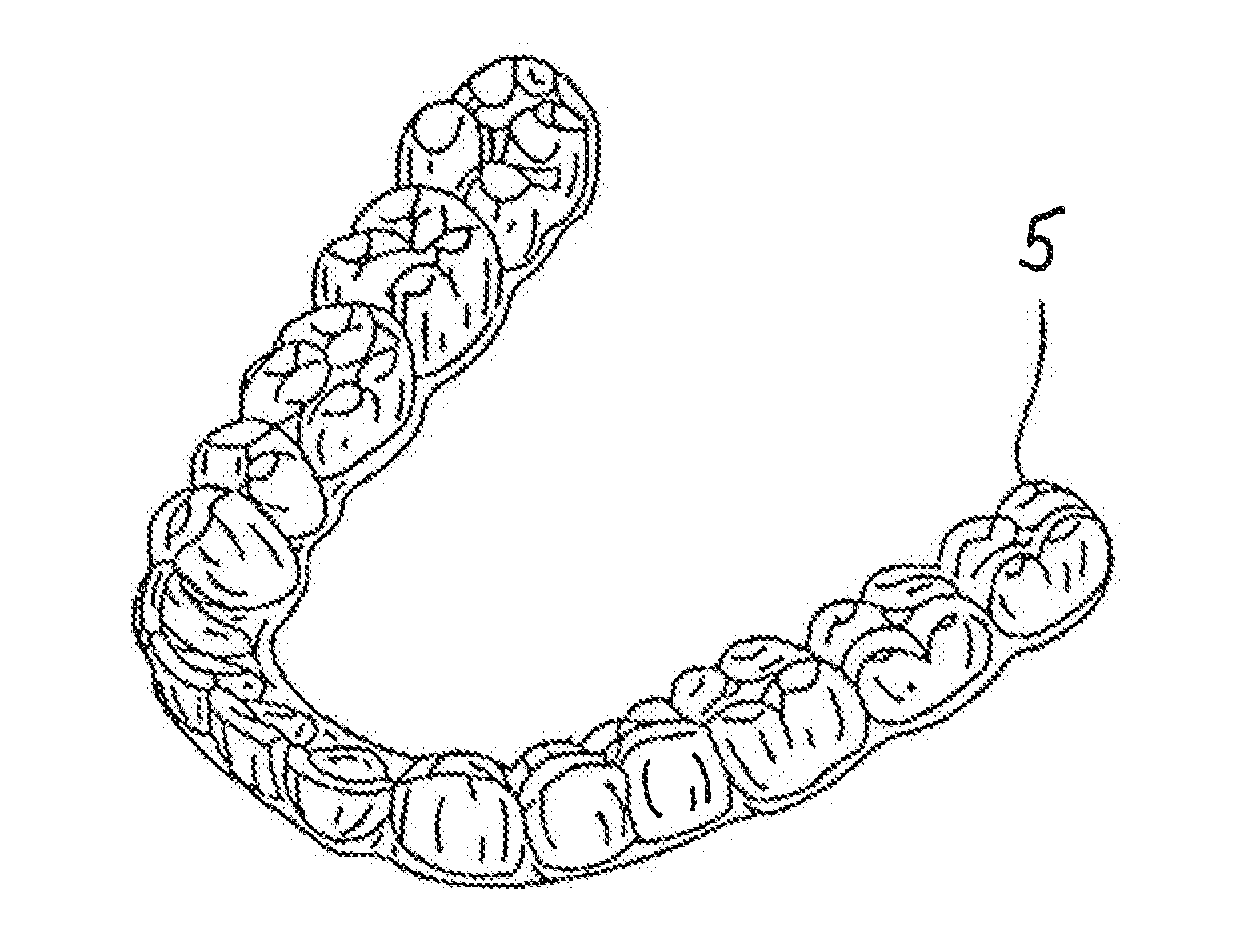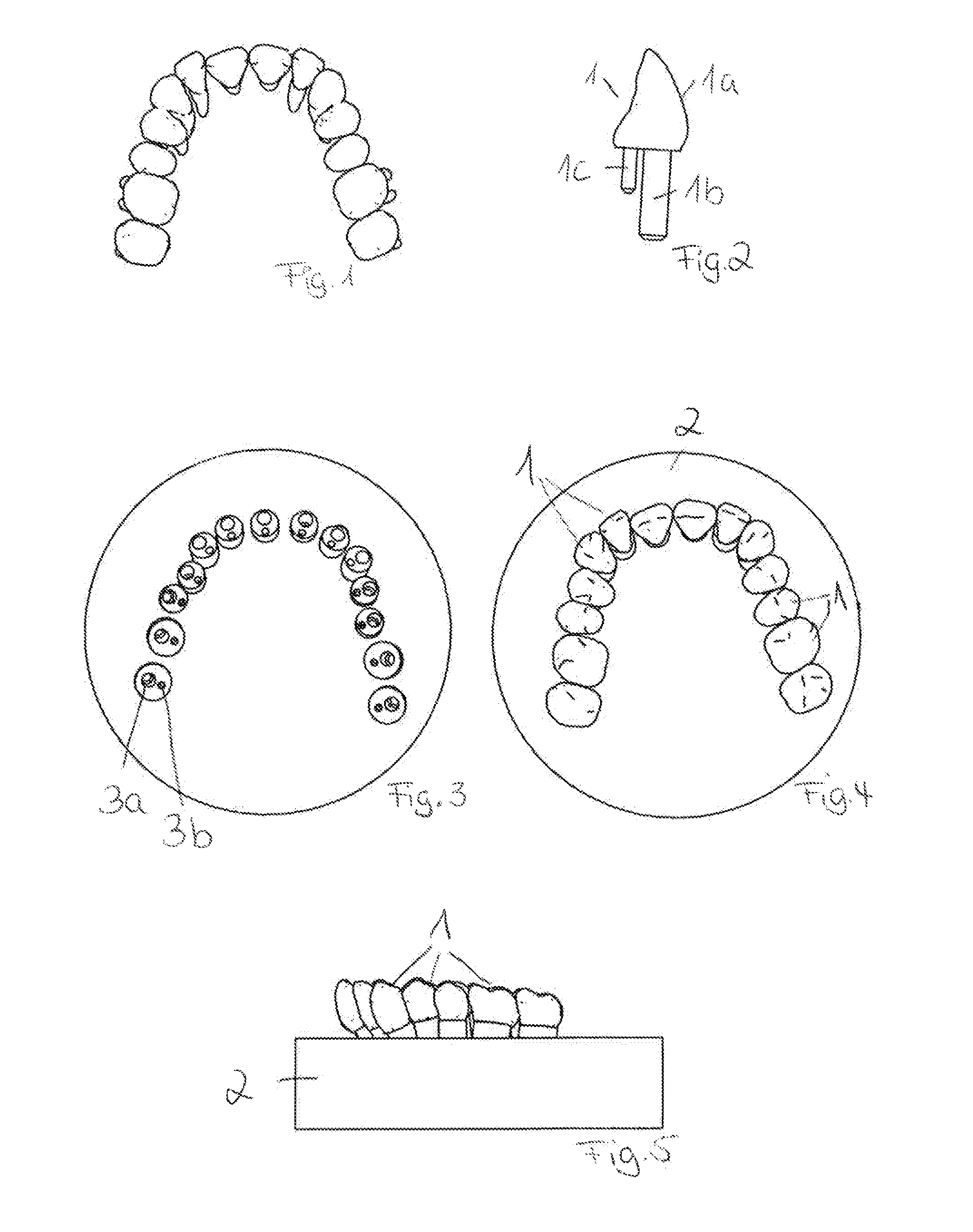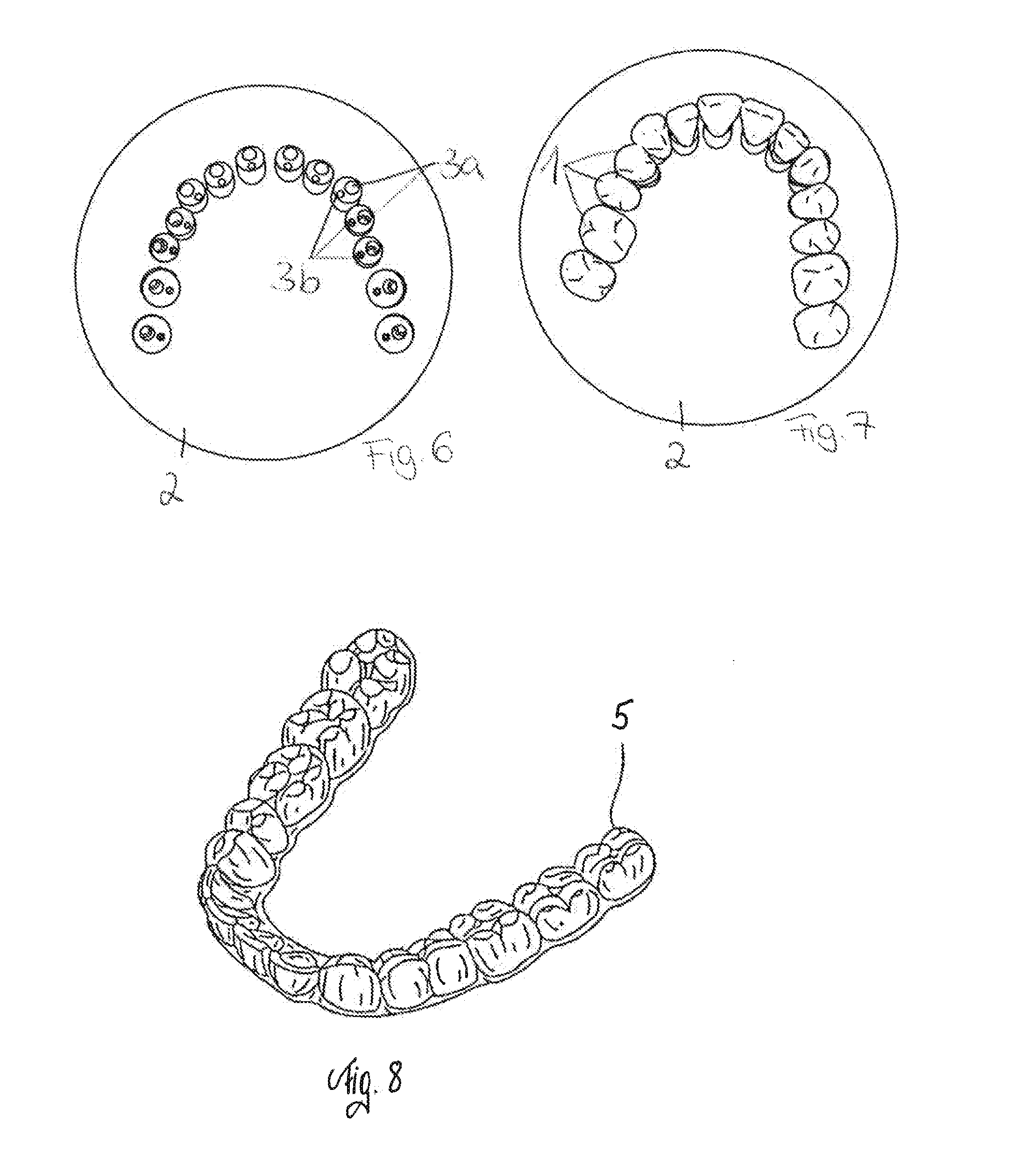Method for producing a set of dental appliances for correcting tooth misalignments and orthodontic set-up model therefor
a technology for teeth and orthodontics, applied in dentistry, medical science, instruments, etc., can solve the problems of limited tooth movement that can be achieved with a single shell appliance, and achieve the effect of reducing labor intensity, simplifying tooth model fitting, and reducing tooth movemen
- Summary
- Abstract
- Description
- Claims
- Application Information
AI Technical Summary
Benefits of technology
Problems solved by technology
Method used
Image
Examples
Embodiment Construction
[0033]FIG. 1 shows a schematic illustration of a patient's teeth in a current position, before starting orthodontic treatment. To correct tooth misalignments, the current position of the patient's teeth is first established, for example using a dental imprint or by x-ray. The data thus obtained regarding the patient's teeth can be digitalised and used to calculate a target position, which constitutes a desired result of the orthodontic treatment. However, a target position may also be predefined for example by an orthodontist or an experienced dental technician.
[0034]Only a small correction to a tooth misalignment can generally be achieved using a single plastics material shell appliance 5. For orthodontic treatment, a whole set of shell appliances 5 is therefore necessary, said shell appliances being used in succession and each carrying out a correction step toward the target position. The intermediate positions desired during treatment, for each of which a respective shell applian...
PUM
| Property | Measurement | Unit |
|---|---|---|
| diameters | aaaaa | aaaaa |
| transparent | aaaaa | aaaaa |
| tooth movements | aaaaa | aaaaa |
Abstract
Description
Claims
Application Information
 Login to View More
Login to View More - R&D
- Intellectual Property
- Life Sciences
- Materials
- Tech Scout
- Unparalleled Data Quality
- Higher Quality Content
- 60% Fewer Hallucinations
Browse by: Latest US Patents, China's latest patents, Technical Efficacy Thesaurus, Application Domain, Technology Topic, Popular Technical Reports.
© 2025 PatSnap. All rights reserved.Legal|Privacy policy|Modern Slavery Act Transparency Statement|Sitemap|About US| Contact US: help@patsnap.com



